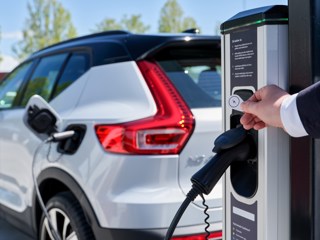The May General Election, resulting austerity measures and tax increases, plus the continuing incentivised push by manufacturers on new car sales will lead to 2015 being the most significant year for the used car market since the recession.
After a reasonably strong start, a variety of factors both within and outside the industry are likely to have definite effect on both supply and pricing in the second half of the year.
Rupert Pontin (pictured), Glass's head of valuations, said: “The key moment is likely to be the General Election. Like any major national event, this will have dampening effect on used car sales whoever wins, especially as the result looks uncertain at this distance.
“Immediately afterwards, whichever stripe of major party gains power, there is likely to be a new round of austerity measures and also tax increases, damaging both spending power and consumer confidence. Towards the latter part of the year we will see an increase in the return of vehicles from the contract hire and leasing sectors and end of contract PCP vehicles to the market."
Dealers, he said, would have to get a lot sharper in the way they buy stock. There will be a shift from what has been until recently a vendors market, into a buyers market where there will be a good breadth of product available.
Interest rate increases most likely at the end of Q3 will lead to a lessening in consumer bullishness, a greater reluctance to spend so willingly, even if the increase is as low as 0.25%.
"Dealers will be under the greatest pressure for some time to buy the best product - best looking and rarest model with the lowest possible mileage - at the best price and then get it on the forecourt and market it with all the tools and skills they have available," Pontin said.
The increase in supply is already evident. Every month it has increased 1.0-1.5% in the latter part of this year, with a depressive impact on prices.
“For a long time, we have been in a low-supply situation against a gradually improving macroeconomic backdrop but that cycle has started to come to an end in recent months and that change will characterise 2015.
“Our longer term forecast is that all of these factors will continue to take even greater effect in 2016, with even more pressure on prices through reduced demand and increased supply.”
However, Rupert said, there was unlikely to be a similar scenario in the new car market.
“Here, we expect sales to stay strong, simply because manufacturers need to ensure that factories continue working as close to capacity as possible and will offer finance to make sure this happens.
“However, later in the year, we believe that it is likely that the deposit levels required for these finance deals will start to fall in response to macroeconomic effects.”
There would have to be an increasing awareness also amongst dealers of how to deal with new cars bought on PCP entering the used car market on a shortening change cycle - efforts to persuade buyers into a new car 12 to 14-months into their contract could become the norm, although there is little evidence of any sizeable volumes of these cars coming into the market to-date. But Pontin had seen data that showed a significant number of two-and-half-year old producting entering the market in November.
"Manufacturers and finance companies have told us they are targeting customers much earlier in the PCP programme and they have targets to achieve on early change," Pontin.
"Where will this end? How far forward can you bring the change? We will begin to see a very unusual curve in the depreciation cycle. Next year cars will come back at 18 months and some at 12 and it will drop the value of those cars because a dealer has to create a compelling price gap between these vehicles and his new stock. The only way a dealer can retain their retail margin on these vehicles is to push down the trade value."
Values for the 18-month late-plate cars under under pressure now and the continued push in new car sales will exacerbate matters.
"However, the situation is complicated by a shortage of used cars in the aged group first registered in 2009/10/11. Their values will remain strong due to their scarcity."





















Login to comment
Comments
No comments have been made yet.